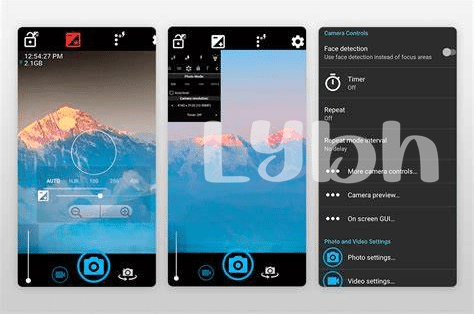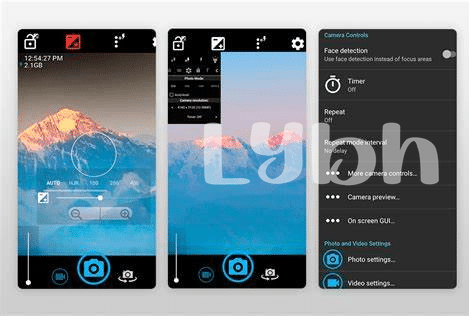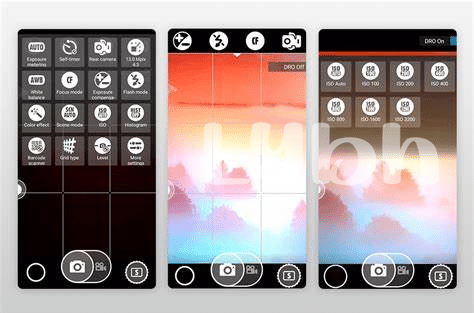- 🕵️ Uncover the Risks: Camera App Permissions
- 🔒 Lock It Down: the Importance of App Encryption
- 🏆 Top Contenders: Popular Camera Apps Reviewed
- 🚫 Red Flags: Spotting Unsafe Camera Apps
- 🛠️ Diy Privacy: Adjusting Settings for Safety
- 🤖 Behind the Scenes: Understanding App Developers
Table of Contents
Toggle🕵️ Uncover the Risks: Camera App Permissions
Imagine downloading a new camera app, excited to try out its fancy filters and snazzy stickers. But hold on a second – before you snap away, did you check what the app is asking to access? Camera apps often ask for various permissions, and while some are necessary, like using your camera and storing photos, others can be a bit nosy, peeking into your location, contacts, or even your messages. It’s like inviting someone into your home; you’d want to make sure they’re only going into rooms they need to be in, right?
Let’s lay it out on the table—quite literally. Here’s a quick look at some common permissions and why a camera app might ask for them:
| Permission | Why It’s Needed | Potential Risk |
|---|---|---|
| Camera | To take photos and videos. | Low – It’s a camera app, after all! 📸 |
| Storage | To save your photos and videos. | Moderate – Watch for apps that want to read unrelated files. 📁 |
| Microphone | To record audio with videos. | Low – But unnecessary for a photo-only app. 🎙️ |
| Location | To geotag photos (add location data). | Moderate to High – Why track your movements unless you want it? 📍 |
| Contacts | To share photos directly or set contact images. | High – Be wary; do you really want a camera app mingling with your friends’ info? 👥 |
To stay safe, ask yourself—does a camera app need your daily step count, or to know when you’re on a call? Probably not. Your safest bet is to choose apps that ask for just what they need to bring your photography to life, and nothing more. Remember, your personal info is like a treasure chest; don’t hand over the key unless you’re sure it’s for the right reasons. 🛡️
🔒 Lock It Down: the Importance of App Encryption
Think of a lock on your front door. It keeps your home safe from intruders, right? That’s pretty much what encryption does for any camera app you use on your Android phone. It’s a digital lock that scrambles your photos and videos so that only someone with the right ‘key’ can unscramble and see them. This means that if a hacker tries to sneak into your app, all they find is a jumbled mess instead of your precious memories. It’s not just about the snapshots of your lunch, though. Imagine if someone got their hands on a video of a private family moment or a photo of your personal documents. You wouldn’t want that in the wrong hands, which is why encryption is so important.
When you’re flicking through the settings on your camera app, you might wonder just how safe your digital moments are. It’s not just about having a password; it’s about making sure that even if someone gets past that, they can’t read your files without the special ‘decoder’. Keeping your private life private seems more like a superhero task, but it’s actually pretty straightforward. Picture it like sending a secret letter that only you and the intended recipient can read – that’s what a good camera app should do with your information. And just like superheroes have their trusted sidekicks, you can always count on experts to point you in the right direction. For instance, if you’re curious about what’s currently topping the charts in terms of utility apps, you can check out what is the best magnifying glass app for android in 2024 updated. This site looks behind the curtain, revealing which apps are the heroes in the digital world, much like what we’re doing for camera apps.
🏆 Top Contenders: Popular Camera Apps Reviewed
When it comes to snapping pictures on your Android, not all camera apps are created equal. Some are like a secure vault, keeping your photos safe, while others might be a bit too chatty, sharing more than you’d like. Picture this: we’ve taken a closer look at some of the most downloaded camera apps on the market, putting them through their paces to see just how snug as a bug in a rug your data will be.
Among the frontrunners, we found a mix of household names and rising stars, each with their own approach to keeping your snapshots under wraps. 🛡️ Take for example, ‘SnapSecure’ – an app that promises to keep your pictures under lock and key, boasting top-notch encryption. Its sleek interface is matched by a strong commitment to privacy, reassuring users with clear settings and permissions. 🌟 Then there’s ‘FotoFort’, which has gained popularity for its user-friendly design and an impressive suite of editing tools. But what really stands out is its privacy policy that’s as clear as a sunny day, ensuring users know exactly where their data stands. These apps not only help you take great pictures but also put you firmly in the driver’s seat when it comes to managing your digital footprint.
🚫 Red Flags: Spotting Unsafe Camera Apps
Imagine you’re walking into a gallery, but instead of paintings, there’s a display of camera apps, each promising to capture your moments with a click. Now, imagine some of these camera apps, instead of safeguarding our memories, act like nosy neighbors, peering into our private data without good reason. That’s why being able to spot the not-so-trusty ones is crucial. Often, these curious apps ask for more than they need—like access to your location, messages, or contacts—when all they should need is access to your camera and storage to save pictures.
Encryption is the invisible bodyguard for your photos, ensuring no one can access them without your say-so. Without it, your pictures might as well be posted on a billboard for all to see. Those apps lacking this bodyguard are a no-go. Besides, if an app is free but bombards you with ads or nudges you to purchase things constantly, it’s like an over-friendly stranger at a party—best to keep your distance.
Adjusting your camera app’s privacy settings can sometimes feel like trying to solve a puzzle. But, if an app makes it too hard or doesn’t give you options to control your privacy, that’s a signal that the app isn’t playing fair. Just like you wouldn’t leave your house without locking the doors, don’t use an app that doesn’t let you secure your digital house.
And while we’re on the topic of privacy and security, if you’re ever curious about which magnifying tool protects your data like a fortress while zooming into the world’s tiny wonders, take a peep at what is the best magnifying glass app for android in 2024 updated. Just one click there can save you from a lot of spies and sneaky eyes in the digital world—because privacy should be as clear and straightforward as the text under a magnifying glass.
🛠️ Diy Privacy: Adjusting Settings for Safety
Imagine turning detective in your own phone, sifting through the maze of settings to safeguard your personal moments. It’s like securing the doors to your digital home, ensuring no unwelcome guests can peek through the windows. 🕵️♂️ Start by diving deep into the camera app’s settings. It’s not just about the photo quality; it’s about who can access those photos. Look for privacy options, toggle off permissions that don’t make sense – like your camera wanting to know your location when it’s unnecessary. Think of it as teaching your app good manners; it should only access what it needs to take a fantastic photo, nothing more.
Equipping yourself with knowledge is like wearing an invisible shield. 🔍 Be aware of what those permissions really mean. Is the app just asking to save to your photo album, or does it want to track your location with every click? Fine-tune your settings to block the oversharing. It’s like telling a chatty friend, “Let’s stick to the essentials,” turning off access to things like your microphone if you’re not using it for videos. A simple switch here and there can strengthen your privacy walls. And don’t forget, updating your operating system can add new safety features, like a reinforced gate in your tech fortress. Here’s a quick guide for you:
| Feature | What to Do | Why It’s Important |
|---|---|---|
| Location access | Disable unless needed for geotagging | Prevents tracking your movements |
| Microphone access | Turn off if not recording audio | Limits eavesdropping potential |
| App updates | Keep automatic updates on | Ensures latest security fixes |
Monitoring those permissions isn’t a one-time event; it’s an ongoing task, like tending a garden to keep it flourishing. Stay vigilant, keep those settings pruned, and your digital life will thank you. 🛡️
🤖 Behind the Scenes: Understanding App Developers
When we’re picking out a camera app for our phones, it’s like inviting someone into our home. It’s important to know a bit about the app makers, kind of like knowing something about a guest. Many of these developers are committed to keeping our snapshots safe and private. They’re the good folks who put up strong fences in the form of security checks and updates to keep the sneaky cyber-thieves away. They listen to feedback, too, patching up any holes in the digital walls that might let someone peek into our photo albums without an invite.
On the flip side, you’ve got the less scrupulous sorts, churning out apps without much thought to our privacy. They might skimp on security or use our data in ways we didn’t agree to, which can leave us feeling a bit exposed. That’s why it’s smart to play detective before downloading. Reading up on the developer, looking at user reviews, and checking out their history can give us clues. Are they known for being tight-lipped, never spilling our secrets? Or are whispers about them letting details slip out? That’s the lowdown on app creators that can help us decide who we trust to frame our digital memories. 🕶️🔍📸




